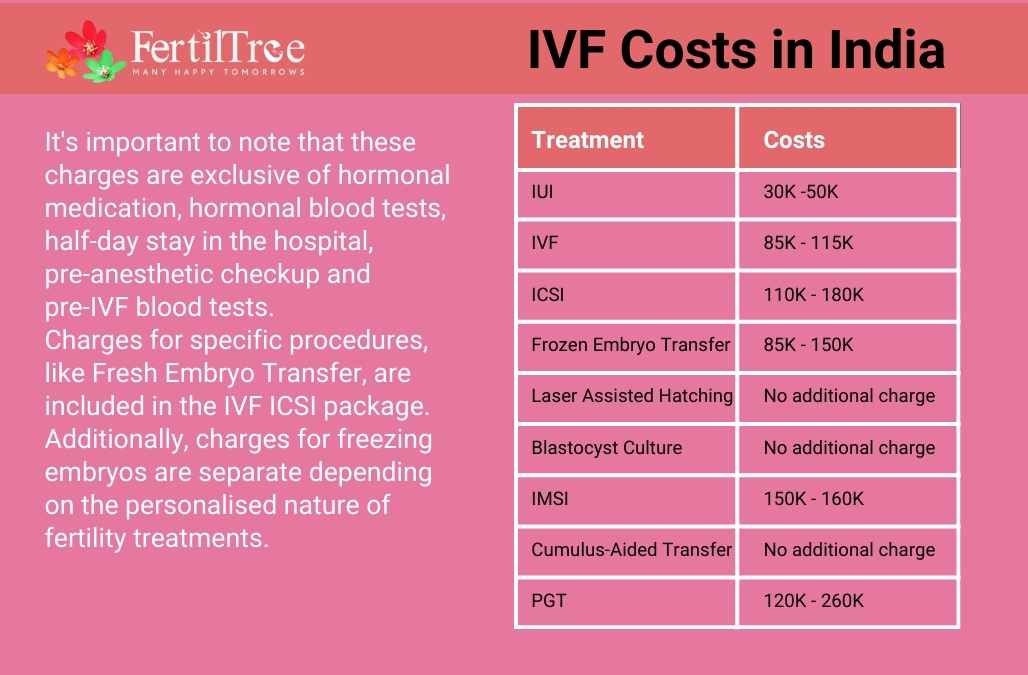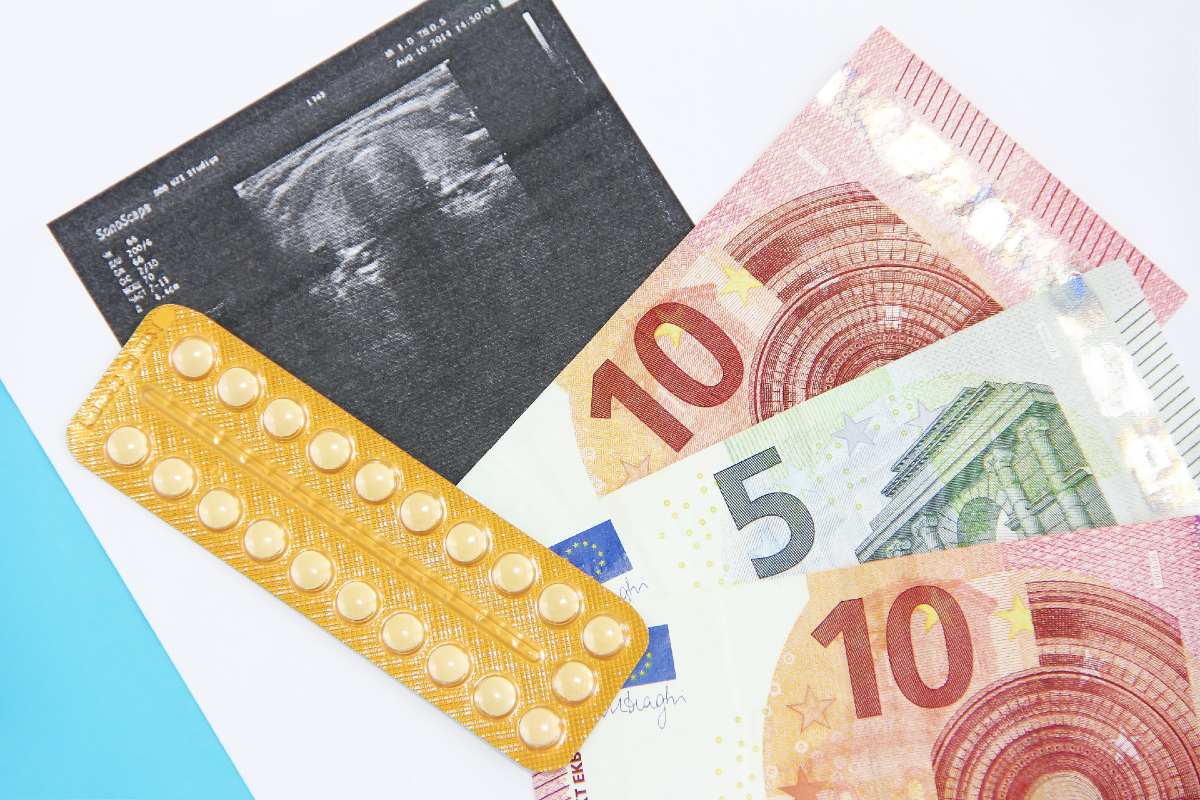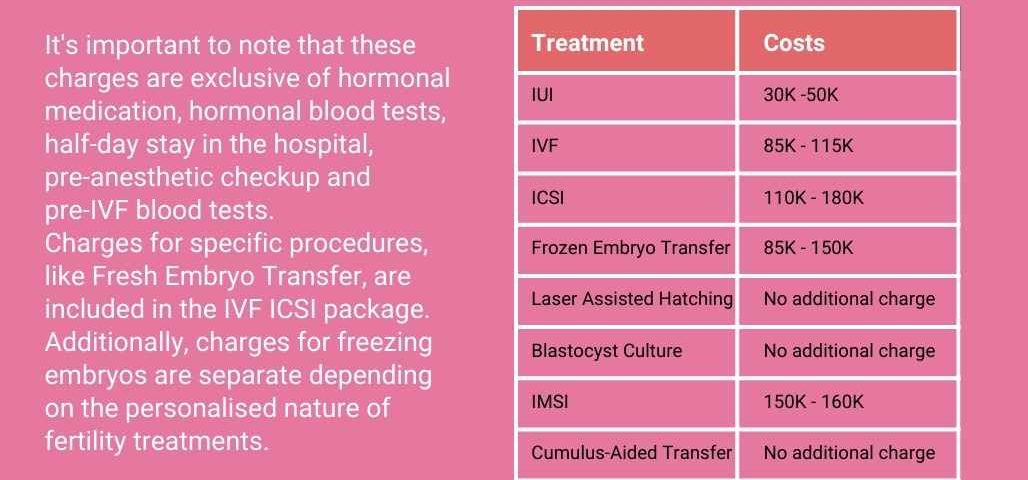
IVF in Michigan: Your Ultimate Guide to Starting a Family
March 30, 2025IVF Expenses: What You Need to Know About Costs, Hidden Fees, and Making It Work
In vitro fertilization (IVF) is a life-changing option for many people dreaming of starting a family. But let’s be real: it’s also a big financial decision that can feel overwhelming. If you’ve ever wondered why IVF costs so much, what’s really included in the price tag, or how families afford it, you’re in the right place. This article dives deep into the world of IVF expenses—way beyond the basics—uncovering surprising details, personal quirks, and practical tips that most people don’t talk about. We’ll explore everything from the price of a single cycle to the emotional and financial rollercoaster of multiple tries, all while giving you the latest scoop and actionable advice to make it work for you.
Ready to peel back the curtain on IVF costs? Let’s get started.
The Big Picture: How Much Does IVF Really Cost?
IVF isn’t cheap—that’s no secret. But the numbers might shock you, especially when you realize how much they can vary. On average, one IVF cycle in the U.S. costs between $12,000 and $15,000, according to the American Society for Reproductive Medicine. Add in medications and extras, and you’re often looking at $20,000 or more. Some clinics even charge up to $30,000 if you need donor eggs or sperm!
But here’s the kicker: most people don’t get pregnant on their first try. Studies show the average patient needs two to three cycles, pushing the total cost closer to $50,000. That’s a big chunk of change—about the price of a small car or a year of college tuition. And unlike buying a car, there’s no guarantee you’ll drive away with a baby.
Why Does It Cost So Much?
Think of IVF like a high-tech recipe. You need skilled chefs (doctors), fancy ingredients (medications), and a state-of-the-art kitchen (lab equipment). Here’s a quick breakdown:
- Doctor visits and monitoring: Ultrasounds and blood tests to track your progress.
- Medications: Hormone shots to grow eggs—sometimes $5,000 alone!
- Egg retrieval: A mini-surgery with anesthesia.
- Lab work: Fertilizing eggs and growing embryos.
- Embryo transfer: Placing the embryo in the uterus.
Each step adds up, and that’s before you factor in surprises like canceled cycles or extra testing.
Fun Fact: IVF’s Price Tag Around the World
Did you know IVF costs differ wildly depending on where you live? In Sweden, you might get three cycles for almost nothing thanks to government funding. In India, a cycle can be as low as $1,200—crazy, right? Meanwhile, in the U.S., insurance rarely covers it fully, leaving families to foot the bill. It’s like a global game of “how much can you pay to roll the dice?”
The Hidden Costs of IVF: What They Don’t Tell You
You might think $15,000 covers everything, but hold up—there are sneaky extras that can catch you off guard. These hidden costs are like the fine print on a contract: easy to miss but impossible to ignore once you’re in deep.
Medications: The Pricey Little Shots
Fertility drugs are a huge chunk of IVF expenses—sometimes half the total cost! A single cycle might need $3,000 to $5,000 worth of injections to boost egg production. Ever wonder why they’re so expensive? They’re custom-made hormones, not your average aspirin. Plus, if your body doesn’t respond well, you might need more, jacking up the bill.
Tip: Ask your doctor about generic versions or discount programs. Some pharmacies offer deals that can save you hundreds.
Storage Fees: Freezing Your Future
Got extra embryos? Freezing them sounds smart, but it’s not free. Storage fees run $500 to $1,000 per year. One couple I heard about kept their embryos frozen for five years while saving for another try—that’s $2,500 just to keep them on ice! It’s like renting a tiny, super-cold apartment for your future kids.
Travel and Time Off Work
IVF isn’t a one-and-done deal. You’ll need multiple appointments—sometimes every other day—for weeks. If your clinic’s far away, gas, flights, or even hotel stays add up. And unless you’ve got a dream boss, taking time off work can mean lost wages. One woman shared online that she spent $1,200 on travel alone because her nearest clinic was three hours away.
Emotional Costs (Yes, They Hit Your Wallet Too)
This one’s tricky. Therapy isn’t cheap, and IVF can be an emotional marathon. A 2023 study from the Journal of Reproductive Psychology found that 40% of IVF patients sought counseling to cope with stress. At $100 a session, that’s another expense piling on. Ever tried retail therapy after a failed cycle? That $200 shopping spree counts too!
Real Talk: One mom confessed she bought a $50 candle every time a cycle failed—just to feel something good. Little splurges like that sneak into the budget.
Why IVF Feels Like a VIP Club (And How to Crash It)
Here’s a not-so-fun truth: IVF often feels like it’s built for people with deep pockets. The process doesn’t care if you’re a teacher, a barista, or a CEO—it demands cash upfront. But there’s hope! Let’s break down why it’s so exclusive and how regular folks can still make it happen.
The Income Gap
Research from Stanford University in 2024 showed that couples earning less than $50,000 a year are half as likely to try IVF compared to those making over $100,000. Why? Lower-income families can’t swing the $20,000 price tag without serious sacrifices. One X user put it bluntly: “IVF shuts out working-class people at every step.”
Insurance: The Wild Card
Only 19 states in the U.S. require insurance to cover some fertility treatments, and even then, IVF isn’t always included. If you’re lucky, your plan might cover $5,000 of a cycle. If not, you’re on your own. Fun fact: Some couples move to states like Massachusetts just for better coverage—talk about commitment!
Crashing the Party: Affordable Options
You don’t need a trust fund to do IVF. Here’s how real people make it work:
- Fertility Grants: Groups like Baby Quest give out thousands to cover costs. Apply early—they’re competitive!
- Clinic Discounts: Some offer “shared risk” programs—pay once, get multiple tries, and a refund if it doesn’t work.
- Mini-IVF: Uses fewer drugs, cutting costs to $5,000-$7,000 per cycle. Less intense, but still effective for some.
Pro Tip: Check out CNY Fertility—they’re known for budget-friendly packages starting at $4,000. It’s not fancy, but it gets the job done.
The Emotional Price Tag: More Than Just Money
IVF isn’t just a hit to your bank account—it’s a wild ride for your heart and mind. Let’s talk about the stuff that doesn’t show up on a receipt but still costs you big time.
The Waiting Game
Every step of IVF comes with a wait: waiting for eggs to grow, waiting to see if they fertilize, waiting two weeks to test for pregnancy. A 2025 survey by Fertility Network found that 60% of patients called this “the hardest part.” One woman said she baked a cake every waiting period—12 cakes later, she had a baby and a serious baking hobby!
When It Doesn’t Work
About 30% of first IVF cycles succeed for women under 35, per the CDC. That means 70% don’t. After spending $20,000, a negative test can feel like a punch in the gut—and the wallet. Couples often dip into savings or take loans for round two, adding stress to an already tough moment.
Expert Quote: “The financial burden of failed cycles can amplify emotional distress,” says Dr. Jane Miller, a fertility psychologist. “It’s a double whammy most don’t expect.”
Guilty Pleasures to Cope
People get creative when stressed. One guy I read about started collecting vintage comic books during IVF—$300 later, he had a stack of Spider-Man issues and a lighter mood. Another woman took up pottery, making tiny bowls for each shot she took. These quirks don’t erase the pain, but they help.
Breaking Down a Cycle: What You’re Actually Paying For
Let’s zoom in on a single IVF cycle and see where your money goes. Knowing this can help you spot deals or ask the right questions at your clinic.
Step-by-Step Cost Breakdown
Here’s a typical cycle, with rough costs based on 2025 data:
- Initial Consultation: $250-$500. Blood tests, ultrasounds, and a chat with the doc.
- Medications: $3,000-$5,000. Shots to grow eggs—think of it like fertilizer for your ovaries.
- Egg Retrieval: $5,000-$7,000. A quick surgery to grab the eggs.
- Lab Fees: $3,000-$4,000. Where the magic happens—sperm meets egg.
- Embryo Transfer: $1,500-$3,000. Placing the embryo in the uterus.
Total Base Cost: $12,750-$19,500. Add-ons like genetic testing ($2,000) or donor sperm ($1,000) push it higher.
The “What If” Costs
- Canceled Cycle: If your eggs don’t grow, you might lose $5,000 before retrieval.
- Frozen Transfer: Using frozen embryos later? Add $3,000-$6,000.
- Donor Eggs: $20,000-$40,000 if your eggs won’t work.
Handy Table:
| Step | Cost Range | What You Get |
|---|---|---|
| Consultation | $250-$500 | Tests and a plan |
| Medications | $3,000-$5,000 | Egg-boosting shots |
| Egg Retrieval | $5,000-$7,000 | Eggs collected |
| Lab Work | $3,000-$4,000 | Embryos made |
| Transfer | $1,500-$3,000 | Embryo placed in uterus |

IVF Myths Busted: Separating Fact from Fiction
There’s a lot of noise out there about IVF costs. Let’s clear up some myths with straight-up facts.
Myth #1: “IVF Always Costs $100,000”
Nope! That’s the high end, usually after multiple cycles with extras like surrogacy. Most people spend $20,000-$50,000 total. It’s still a lot, but not always six figures.
Myth #2: “Insurance Never Covers It”
Not true. If you live in a mandate state like New York, insurance might cover part of it. Even outside those states, some employers (think big tech companies) offer fertility benefits. Check your policy!
Myth #3: “Cheaper Clinics Are Sketchy”
Low cost doesn’t mean low quality. Clinics like CNY Fertility keep prices down by skipping frills, not cutting corners. Research success rates, not just price tags.
Quick Checklist:
✔️ Ask about insurance coverage.
✔️ Compare clinic success rates online.
❌ Don’t assume high cost = better odds.
Insider Secrets: What Clinics Won’t Tell You
Clinics want your business, but they don’t always spill the tea. Here are some behind-the-scenes tidbits to save you money and stress.
The “Base Fee” Trap
That $12,000 “IVF cycle” quote? It might not include meds, anesthesia, or follow-ups. One couple got hit with a $4,000 surprise bill for extras they thought were covered. Always ask: “What’s NOT included?”
Success Rates Are Tricky
Clinics love to brag about high success rates, but dig deeper. Are they counting pregnancies or live births? Older patients might drag numbers down. A 2024 report from the CDC showed top clinics hit 50% live births for under-35s—check yours against that.
Negotiation Is a Thing
Some clinics haggle, especially if you’re paying cash or doing multiple cycles. One dad I read about shaved $2,000 off by asking for a discount upfront. It’s not guaranteed, but it’s worth a shot.
Expert Quote: “Patients often don’t realize they can negotiate or ask for payment plans,” says Dr. Sarah Thompson, a reproductive endocrinologist. “It’s not advertised, but it happens.”
Real Stories: How Families Pay for IVF
Numbers are one thing, but stories hit different. Here’s how three families tackled IVF expenses—warts and all.
The DIY Fundraisers
Lisa, a 32-year-old teacher, raised $10,000 with a garage sale and a GoFundMe. She sold old clothes, baked cookies, and shared her story online. “It felt weird asking for help, but people wanted to pitch in,” she said. Her first cycle worked—baby Liam arrived in 2024.
The Loan Route
Mike and Jen, both 28, took out a $25,000 personal loan after two failed cycles cost $30,000 from savings. “We were broke but not done,” Mike said. Their third try brought twins—and a monthly payment they’re still tackling. Tip: Shop around for low-interest rates.
The Side Hustle Queen
Tara, 35, started driving for Uber on weekends to cover $15,000 in IVF costs. She made $300 a week, plus her day job, and paid cash for one cycle. “I’d blast music and pretend it was a road trip,” she laughed. Her son was born in 2023.
Cutting Costs Without Cutting Corners
You don’t have to break the bank to do IVF. Here are practical, research-backed ways to save money while keeping your chances solid.
Go Mini-IVF
Mini-IVF uses fewer drugs, dropping costs to $5,000-$7,000. A 2024 study in Fertility and Sterility found it’s just as effective for women under 35 with good egg reserves. Less invasive, less cash—win-win.
Shop Around
Prices vary by clinic and city. A cycle in New York might be $18,000, but in Texas, it’s $12,000. Call around, check reviews, and don’t be shy about traveling if it saves thousands.
Freeze Smart
Freezing all embryos and transferring later can dodge ovarian overstimulation risks—and save $3,000-$5,000 on meds per cycle. A 2025 Yale Medicine report backs this up: frozen transfers are trending up for a reason.
Steps to Save:
- Compare clinic prices online.
- Ask about mini-IVF eligibility.
- Freeze embryos if you can—it’s cheaper long-term.
The Future of IVF Costs: What’s Coming?
IVF expenses aren’t set in stone. New trends and research could shake things up. Here’s what’s on the horizon based on the latest buzz.
Tech to the Rescue
Automation might cut lab costs soon. A 2023 paper in Reproductive Medicine predicted “lab-on-a-chip” tech could slash embryo-growing expenses by 20%. Cheaper labs, lower bills—fingers crossed!
Policy Push
Politicians are talking IVF coverage. In 2024, Trump floated making insurance cover it nationwide. If that happens, out-of-pocket costs could drop big time. Keep an eye on the news!
Global Options
More folks are trying “fertility tourism.” A cycle in Mexico costs $6,000, and success rates are solid. One catch: travel risks and language barriers. Still, it’s a budget game-changer.
Expert Quote: “Technology and policy shifts could make IVF more accessible in the next decade,” says Dr. Robert Carter, a fertility researcher. “We’re at a tipping point.”
Your IVF Money Plan: A Step-by-Step Guide
Ready to tackle IVF expenses? Here’s a roadmap to budget, save, and spend smart—tailored for real life.
Step 1: Know Your Number
Call your clinic for a full quote—base fee plus extras. Write it down. Example: $15,000 total? That’s your goal.
Step 2: Check Coverage
Read your insurance policy or call HR. Even $2,000 covered helps. No luck? Look into state mandates or employer perks.
Step 3: Build a Fund
- Save: Cut one coffee a week—$20/month adds up.
- Side Gig: Try freelancing or selling stuff online.
- Grants: Apply to five fertility charities—$5,000 is common.
Step 4: Plan for Failure
Set aside $5,000 for a second try. It’s tough to think about, but 70% need it. Better safe than scrambling.
Step 5: Ask Questions
At your consult, ask: “Can I negotiate? Any discounts? What’s the cheapest option?” Clinics love proactive patients.
Budget Example:
- Goal: $15,000
- Savings: $5,000
- Grant: $5,000
- Loan: $5,000
= One cycle, covered!
IVF Expenses FAQ: Your Burning Questions Answered
Got questions? I’ve got answers—short, sweet, and straight from the trenches.
Can I Do IVF on a Budget?
Yes! Mini-IVF, grants, and cheaper clinics keep it under $10,000 sometimes. It’s not luxury, but it works.
What If I Can’t Afford It?
Try intrauterine insemination (IUI)—$500-$1,000 per try—or look into adoption. IVF’s not the only path.
Are Payment Plans a Thing?
Totally. Many clinics offer 0% interest plans for 12 months. Ask upfront!

Let’s Talk: Your Turn to Share
IVF expenses are a beast, but you’re not alone. What’s your biggest worry about the cost? Found a hack to save money? Drop your thoughts below—I’ll reply! Let’s build a community of real talk and real help. Oh, and if you want a free IVF cost checklist, sign up for my newsletter. Let’s make this journey a little less scary, together.
